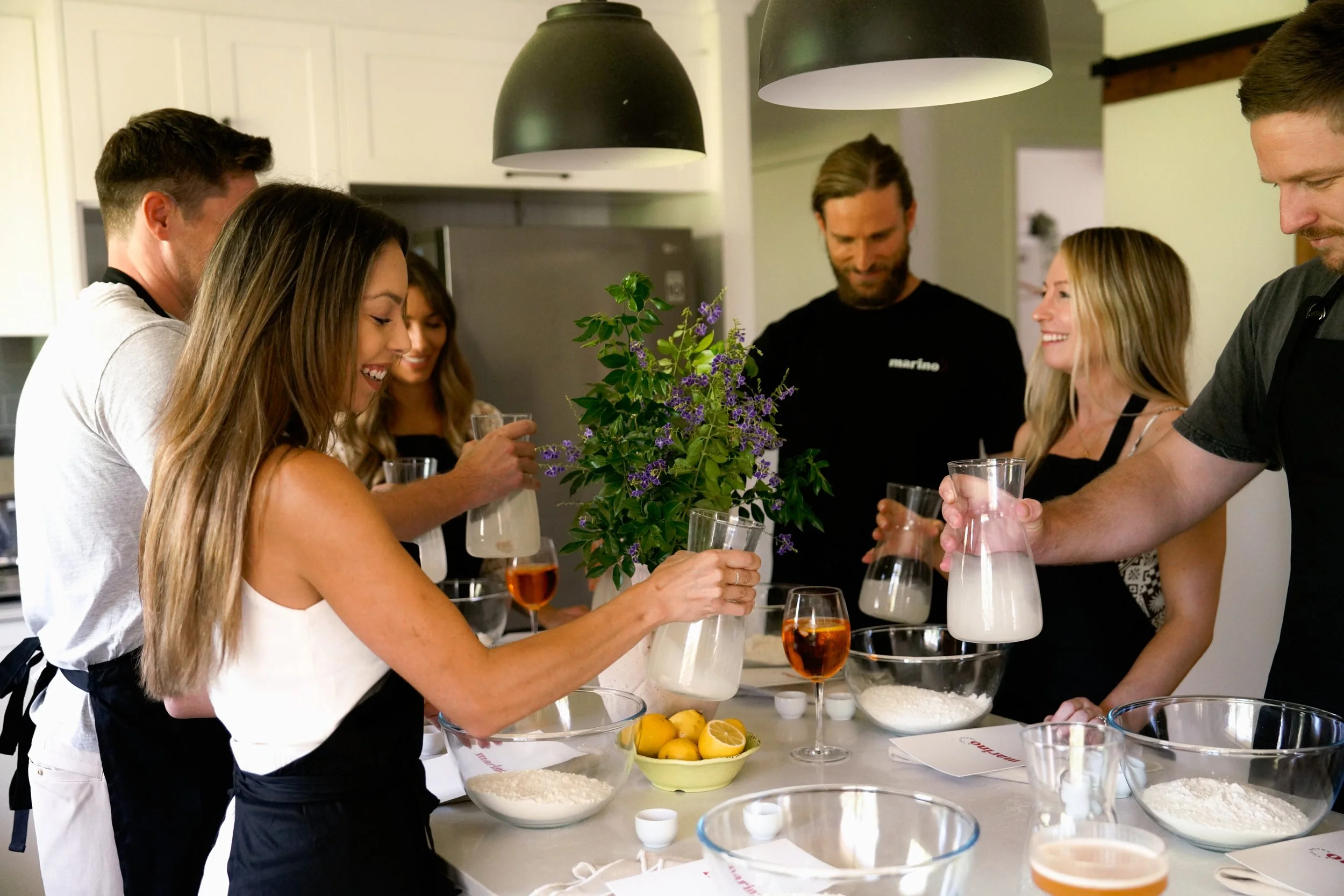The Art of Dough: What Neapolitan Pizza Teaches Us About Patience
Craft, care, and the quiet rhythm of rising dough
In an age of instant everything, there’s something profoundly grounding about waiting for dough to rise. At Marino & The Dough, we don’t just teach you how to make pizza dough at home, we invite you into a slower way of cooking. One where the stretch, fold, and rest of Neapolitan pizza dough becomes more than a technique. It becomes a ritual. A return to the roots of traditional Italian cooking.
Luke Marino, founder and pizza masterchef, grew up between two cultures: Australian beaches and Italian kitchens. But it was in Naples, watching pizzaiolos shape soft rounds of dough with reverence, that he truly understood what dough could teach us. “There’s no rushing it,” he says. “You learn to let time do its work.”
And that’s where the transformation begins.
More Than a Recipe. It’s a Mindset
You’ll find plenty of Neapolitan pizza dough recipes online. But what they often miss is the heart behind the process. At its core, doughmaking is an act of attention. You feel it with your hands. You listen to the texture. You adjust to the room’s mood, the humidity, the temperature, and the light.
Guests in our artisan pizza class often come expecting just a cooking lesson. What they leave with is a deeper sense of rhythm and calm. The slow rise of the dough up to 24 hours, in some cases, reminds you to pause, breathe, and trust.
And if you’re wondering, how long should Neapolitan dough rise? The answer is: long enough for it to come alive. That could be 16 hours at room temperature or longer with a cold ferment in the fridge. What matters is not speed, but strength and flavour.
The Slow Food Movement, in Practice
This philosophy ties closely to the slow food movement, born in Italy and rooted in respect for ingredients, for time, and for the people we cook for.
When you make slow-rise pizza dough, you’re not just improving the texture and digestibility. You’re building anticipation. You’re honouring the grain and the yeast. You’re creating something that didn’t exist a day ago and that’s worth celebrating. It’s also why we bring the class into your own home. There’s no polished kitchen studio or commercial equipment. Just your bench, your oven, and the kind of hands on guidance that meets you where you are.
A Class That’s Crafted, Not Scripted
Luke’s teaching style is more mentor than chef. He guides, but lets you lead. He shares stories about his nonna’s Sunday bakes, about learning to fold dough like the old masters, and invites you into that lineage. In class, you’ll learn to make a true Neapolitan pizza dough: finely milled flour, water, salt, and a touch of yeast. Nothing more. No shortcuts. Just time and technique. You'll shape the dough by hand, learn how to proof it properly, and prepare it for the high-heat bake that gives Neapolitan pizza its signature leopard-spotted crust.
You’ll also leave with confidence not just in your recipe, but in your rhythm. Because once you feel the dough come together under your hands, you understand what patience tastes like.
The Joy of Connection
At the end of every masterclass, we gather around the table. We eat. We talk. And admire each other’s pizzas like art on a plate.
And that’s really what this is about. The dough is just the start. The real magic happens when you slow down, share a meal, and realise you’ve created something together.
So, whether you're chasing the perfect slow rise or simply craving something more meaningful in the kitchen, let doughmaking be your way in. It’s tradition, therapy, and a little bit of culinary poetry all rolled into one.
Ready to get hands-on? Join Luke Marino for a private artisan pizza class in your own kitchen. Discover the full ritual of doughmaking, from first mix to final bake.



